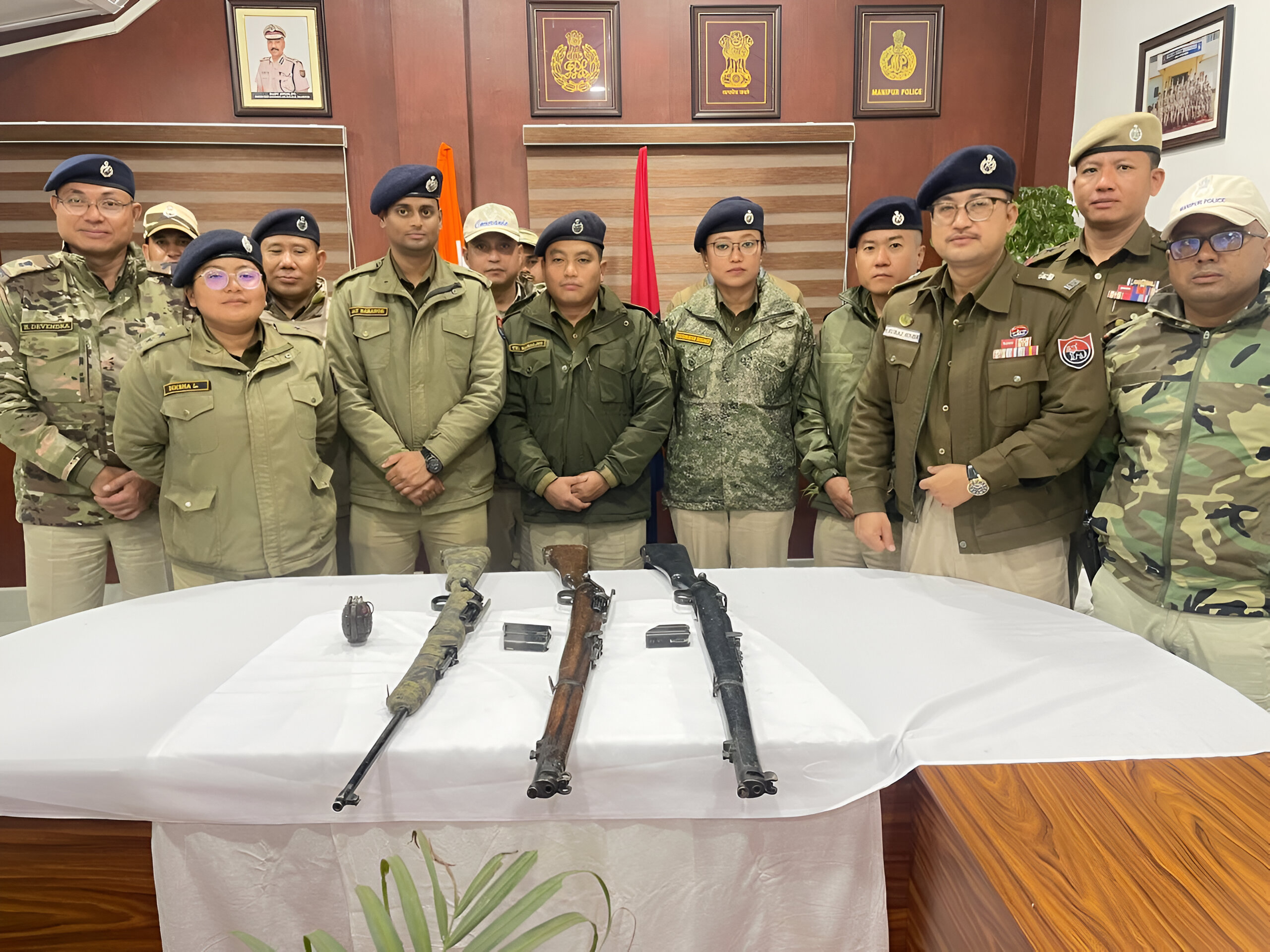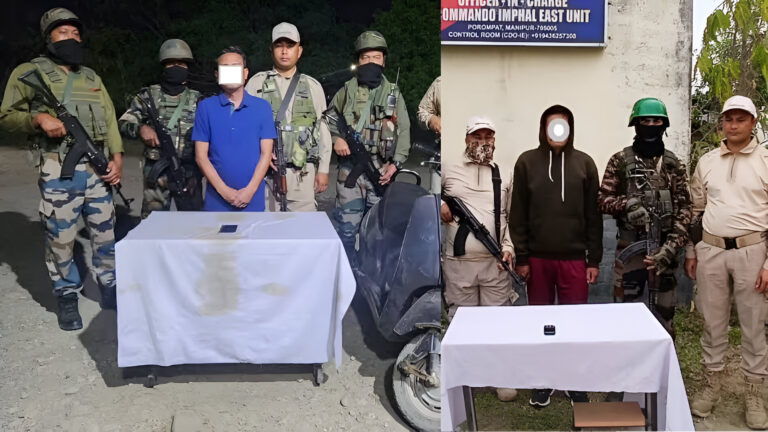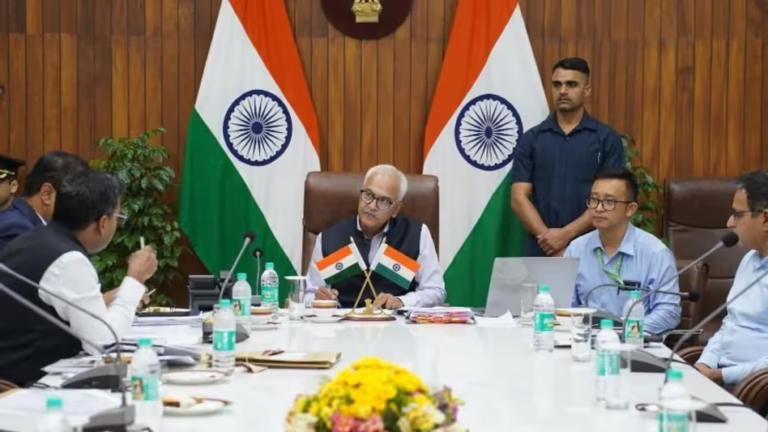Public Surrenders and Law Enforcement Triumph: Large Cache of Arms Deposited Across Five Districts and Extortionists, Militants Nabbed
Short Summary
In a groundbreaking operation that has set a new benchmark in regional security, citizens across five districts have voluntarily surrendered a large cache of arms, while security forces successfully nabbed several extortionists and militants. This dual-pronged initiative not only strengthens public safety but also demonstrates the community’s commitment to peace and the effectiveness of coordinated law enforcement efforts in Northeast India.
In-Depth Article: Uniting Communities and Authorities for a Safer Tomorrow
Introduction
Have you ever witnessed a community come together to make a bold statement against violence? Picture this: across five districts in Northeast India, regular citizens are taking a stand by voluntarily surrendering arms that once threatened public safety. Simultaneously, our vigilant security forces have been hard at work, apprehending extortionists and militants who undermine our peace. This powerful two-pronged approach is a testament to how community cooperation, combined with proactive law enforcement, can transform security dynamics in the region.
In today’s article, we’re diving deep into this extraordinary event. We’ll walk through the story step by step—from the public’s courageous decision to surrender arms to the strategic efforts by security agencies to nab those who operate on the fringes of the law. So, let’s unravel the details, explore the implications for public safety, and understand why this initiative is a turning point for Northeast India.
The Story Unfolds: What Happened?
On March 1, 2025, across five key districts, local residents made the brave decision to lay down their arms. This wasn’t a forced handover; it was a voluntary act, reflecting the community’s desire for peace and stability. Imagine the sight: a collective, peaceful effort where citizens, ranging from former militants to common folks who once felt pressured to arm themselves, come forward to deposit their weapons. This historic act was met with overwhelming support from law enforcement agencies, who had been urging the public to contribute to the disarmament drive.
At the same time, security forces intensified their operations against criminal elements. During coordinated raids, extortionists and militants were nabbed, putting an end to a series of disruptive activities that had plagued the region. These arrests sent a clear message: criminality and violence have no place in our communities.
A Closer Look at the Voluntary Surrender of Arms
Let’s break it down further. Why did so many people decide to surrender their arms? Several factors played into this momentous decision:
- Community-Driven Change: For many citizens, the arms they once clutched were symbols of past conflicts and insecurities. The decision to hand them over signified a collective yearning for a fresh start—a community ready to move away from a history of violence.
- Government Incentives and Support: Authorities not only called for the surrender but also offered support mechanisms—such as rehabilitation programs and alternative livelihood options—to those who decided to disarm. This assurance of a better future played a crucial role in encouraging participation.
- A New Social Contract: The voluntary act of depositing arms represents a new social contract between the citizens and the state. It is a mutual pledge: the public will support peace initiatives, and in return, the government will work tirelessly to ensure their safety and development.
- A Message to Criminal Elements: By coming forward in large numbers, the public effectively communicated that they no longer welcome violence or fear-driven armament. This act of defiance against the status quo sends a strong signal to extortionists and militants that their reign of terror is losing ground.
Imagine a mosaic where each surrendered weapon is like a tile contributing to a larger picture of peace and unity. That’s exactly what’s happening here—each act of surrender is building a safer, more cohesive community.
The Role of Security Forces: A Strategic Offensive
Parallel to the public’s efforts, our security forces have been on high alert, using modern technology and traditional investigative techniques to track down and arrest those involved in criminal activities. Their operations can be summed up in a few key points:
- Coordinated Raids: In a series of well-coordinated operations, security forces combed through known hideouts and high-risk areas. These raids were meticulously planned, ensuring minimal disruption to innocent citizens while targeting extortionists and militants.
- Technological Integration: Advanced surveillance tools, including drones and thermal imaging, were deployed to monitor and track criminal movements. These technological advantages allowed for precise and effective raids.
- Inter-Agency Collaboration: Multiple law enforcement agencies worked together, sharing intelligence and resources. This collaboration ensured that the operations were comprehensive and that no stone was left unturned.
- Public-Police Synergy: Community tips played an instrumental role. When citizens trust and collaborate with their security forces, it creates a powerful synergy that significantly enhances overall safety.
Think of it as a chess game—every move made by the security forces is part of a larger strategy to checkmate criminal elements. Their vigilance and teamwork are crucial in turning the tide against extortionists and militants.
The Broader Impact on Public Safety and Community Trust
The dual actions of voluntary arms surrender and the arrest of criminals have far-reaching implications. Here’s how they are reshaping the region:
- Enhanced Public Safety: With fewer arms in circulation, the risk of violent confrontations decreases significantly. A disarmed community is inherently less likely to fall into cycles of revenge and retribution.
- Increased Trust in Authorities: When citizens see tangible results from their cooperation—like a safer neighborhood and decisive action against criminals—it reinforces their trust in government institutions and law enforcement.
- Economic and Social Benefits: A stable environment encourages economic activities. Local businesses flourish, tourism can increase, and overall quality of life improves when people feel secure.
- Long-Term Peace Building: The symbolic nature of the arms surrender and the arrest of criminals contributes to a broader peace-building initiative. It is the first step in a long-term strategy aimed at creating lasting harmony and preventing future violence.
Imagine the region as a garden. With the weeds of violence and crime being removed, the flowers of community spirit, economic growth, and social harmony can finally bloom.
Historical Context: Understanding the Roots of Conflict
To fully appreciate the significance of these events, it’s important to look at the historical backdrop. Northeast India has a long and complex history marked by periods of conflict, insurgency, and political unrest. Factors such as economic disparities, ethnic tensions, and external influences have contributed to a climate where arms became a tool for survival and assertion of power.
Over the years, various initiatives have attempted to disarm communities and foster a culture of peace. While previous efforts had mixed results due to lingering mistrust and unaddressed socio-economic issues, the current initiative seems different. It is driven by a renewed sense of purpose, bolstered by community engagement and modern technology. This evolving approach reflects a maturation in the collective mindset—one that now prioritizes peace and progress over conflict.
Community Empowerment: The Heart of the Initiative
At the core of this transformative process is the empowerment of local communities. Here’s how citizens are playing a pivotal role:
- Active Participation: The voluntary surrender of arms is not an isolated incident; it is part of a broader movement where community members are actively participating in their own security. This active engagement fosters a sense of ownership and responsibility.
- Educational Outreach: Authorities and community leaders are conducting awareness programs about the dangers of arms proliferation and the benefits of disarmament. These educational initiatives help demystify the process and encourage more people to take part.
- Economic Transition Programs: Recognizing that many citizens relied on arms for protection in unstable times, the government is offering alternative livelihood programs. These initiatives help former militants and others transition into peaceful, productive roles.
- Cultural Revival: Alongside disarmament, there is a focus on reviving local traditions and cultural practices that celebrate peace and unity. Festivals, community dialogues, and cultural events are being organized to strengthen bonds and foster a collective identity.
Consider these efforts as the nurturing of a seedling. With proper care, education, and opportunities, what was once a symbol of conflict is transforming into a beacon of hope and unity.
Law Enforcement and Community Collaboration: A Model for Future Initiatives
One of the most remarkable aspects of this operation is the seamless collaboration between law enforcement and local communities. This partnership is essential for creating a safe and resilient society. Here’s why it’s working so well:
- Mutual Trust: Successful operations hinge on trust. When citizens believe that their security forces have their best interests at heart, they are more willing to share critical information and cooperate.
- Open Communication Channels: Regular meetings, community forums, and social media interactions help keep the dialogue open. These platforms allow for real-time feedback and rapid dissemination of information.
- Shared Goals: Both the community and law enforcement share the common goal of a peaceful, secure region. This alignment of objectives makes it easier to coordinate efforts and sustain long-term initiatives.
- Responsive Governance: When the government responds to community needs and shows tangible progress, it reinforces the commitment of both the citizens and the authorities to work together.
Think of this collaboration as a finely tuned orchestra—each instrument, whether it’s the community or the police, plays its part to create a harmonious symphony of security and peace.
Economic and Social Ramifications
Beyond immediate security benefits, the disarmament drive and law enforcement actions have significant economic and social implications:
- Boosting Local Economy: A reduction in violence naturally attracts investments and encourages business activities. People are more likely to start new ventures or expand existing ones when they feel safe.
- Improving Infrastructure: With fewer resources diverted to managing violence and conflicts, the government can focus on improving infrastructure—roads, healthcare, education, and more—thus enhancing overall quality of life.
- Attracting Tourism: Northeast India is renowned for its natural beauty and rich culture. A stable and secure environment can significantly boost tourism, which in turn creates jobs and uplifts communities.
- Enhancing Social Harmony: The visible acts of disarmament and law enforcement success foster a sense of unity and collective purpose. Social cohesion is strengthened when people see their neighbors, leaders, and law enforcement working together for a common good.
- Long-Term Stability: Ultimately, these initiatives pave the way for long-term peace and stability. A region free from the threat of armed violence can focus on development, education, and cultural revival.
Imagine the positive ripple effect—a single act of surrender and the arrest of criminals sends shockwaves of change that resonate across every facet of society.
Challenges and the Road Ahead
While the current achievements are commendable, it’s important to acknowledge that the road to lasting peace is paved with ongoing challenges:
- Sustaining Momentum: Keeping up the momentum is critical. Authorities must ensure that disarmament drives and law enforcement operations are not one-off events but part of a continuous strategy.
- Addressing Root Causes: Disarmament is just one part of the equation. Economic disparities, ethnic tensions, and political instability need to be addressed holistically.
- Ensuring Transparency: As the initiative progresses, transparency in operations and decision-making will be crucial for maintaining public trust.
- Balancing Security and Freedom: Striking the right balance between strict security measures and individual freedoms remains a delicate challenge.
- Adapting to New Threats: As criminals evolve their methods, law enforcement must remain agile and adaptive, continually updating their strategies to counter emerging threats.
Addressing these challenges requires a sustained commitment from all stakeholders—citizens, law enforcement, and the government alike.
Success Stories: Real Voices from the Community
Let’s not just talk about policies and strategies—real people are at the heart of this transformation. Here are some voices from the community:
- A Former Arms Holder’s Journey: One individual, who once believed that keeping arms was the only way to survive, shared how surrendering his weapon marked the beginning of a new chapter. “I was always afraid, not just for myself but for my family. Handing over my weapon was like letting go of that fear, embracing a future full of hope,” he said.
- Community Leader’s Perspective: A respected local leader expressed optimism, noting, “Our community has shown immense courage. This act of surrender is more than a policy—it’s a promise to ourselves that peace will prevail.”
- Youth and Empowerment: Many young people, once caught in cycles of violence, are now pursuing education and entrepreneurial ventures. They see this as an opportunity to build a future free from the shadow of conflict.
- Women’s Voices: Local women, often the unsung heroes in maintaining community harmony, have been at the forefront of advocating for peace. Their active participation in community meetings and cultural events underscores the importance of unity in the face of adversity.
- A Shared Vision for Tomorrow: Overall, the message from all corners of the community is clear—there is hope, and together we can build a future defined by safety, opportunity, and solidarity.
Media’s Role and Public Awareness
Media coverage has played a significant role in amplifying the message of this initiative. Here’s how:
- In-Depth Reporting: Local and national news outlets have provided detailed accounts of both the arms surrender and the law enforcement operations. This transparency helps keep the public informed and engaged.
- Social Media Mobilization: Platforms like Twitter, Facebook, and WhatsApp have been instrumental in spreading awareness. Hashtags and community groups are facilitating discussions, sharing success stories, and encouraging further participation.
- Highlighting the Positives: Amidst reports of violence, the focus on positive developments—like the voluntary surrender of arms—helps paint a picture of progress and resilience.
- Constructive Criticism: Responsible journalism also holds authorities accountable, ensuring that the momentum is maintained and that challenges are addressed proactively.
- Public Sentiment: The media’s balanced coverage has contributed to a positive public sentiment, fostering an environment where citizens feel empowered to act for the greater good.
Government Initiatives and Policy Reforms
The current developments have also spurred government action aimed at building on this success:
- New Disarmament Programs: Building on the success of the public surrender, the government is planning further initiatives to encourage arms deposition across even more districts.
- Legislative Reforms: Lawmakers are reviewing existing policies to ensure they adequately address the challenges of armed violence and offer incentives for community-led disarmament.
- Community Development Projects: With a focus on long-term stability, new projects aimed at economic development, education, and infrastructure are being prioritized to transform the social landscape.
- Enhanced Security Protocols: Continuous upgrades to surveillance and rapid response systems ensure that law enforcement remains ahead of potential threats.
- Cross-Sector Collaboration: The government is actively fostering partnerships with NGOs, community groups, and international agencies to create a robust support network that reinforces peace and stability.
These initiatives are paving the way for a future where public safety is at the forefront, ensuring that the gains made today lead to lasting, transformative change.
Conclusion: A New Era of Peace and Community Empowerment
In conclusion, the voluntary surrender of a large cache of arms across five districts, coupled with the swift arrest of extortionists and militants, marks a monumental step toward a safer, more united Northeast India. This dual approach—a blend of community empowerment and proactive law enforcement—demonstrates that when citizens and authorities work hand in hand, transformative change is not only possible but inevitable.
This event is more than just a news story; it’s a beacon of hope. It reminds us that every act of courage, every surrendered weapon, and every apprehended criminal is a brick in the foundation of a peaceful future. As we move forward, it is essential to build on this momentum by addressing underlying issues, strengthening community bonds, and continually evolving our security strategies.
Together, we can transform the narrative of violence into one of unity, resilience, and progress—a narrative where every citizen plays a vital role in shaping a better tomorrow.
FAQs
- What prompted the public to surrender a large cache of arms across five districts?
The public surrender was driven by a community-wide desire for peace, bolstered by government incentives, rehabilitation programs, and the promise of a safer future free from the cycle of violence. - How did security forces manage to nab extortionists and militants during this operation?
Through coordinated raids, the use of modern surveillance technology, and strong inter-agency collaboration, security forces effectively targeted high-risk areas, leading to the successful arrest of extortionists and militants. - What impact does the voluntary arms surrender have on public safety in the region?
Reducing the number of arms in circulation significantly lowers the risk of violent confrontations, builds trust between citizens and authorities, and lays the groundwork for economic and social development. - How are community leaders and local citizens responding to these events?
Many community leaders and citizens view these developments as a turning point, with expressions of hope, increased participation in public safety initiatives, and a collective commitment to rebuilding trust and unity. - What measures are being taken to ensure the long-term success of these initiatives?
Authorities are planning further disarmament programs, legislative reforms, and community development projects, while also enhancing security protocols to maintain the momentum of peace and stability in the region.


